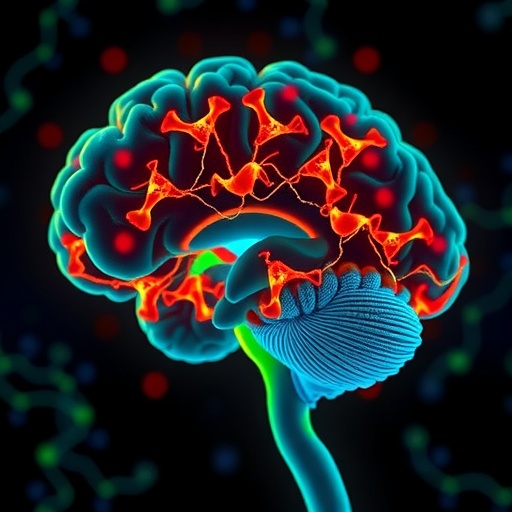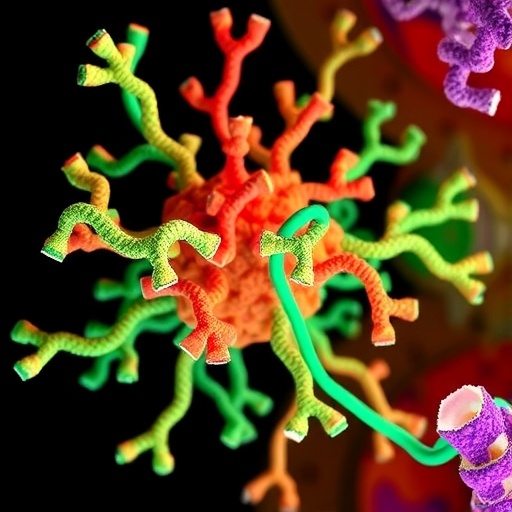
In the intricate landscape of neuroimmunology, the modulation of immune responses within the central nervous system (CNS) remains one of the most challenging puzzles. A groundbreaking new study led by Lößlein, Linnerbauer, Zuber, and colleagues has illuminated a critical regulatory mechanism involving transforming growth factor alpha (TGFα), a molecule previously overshadowed by its better-known counterparts in the TGF family. Their work, published in Nature Communications, reveals that TGFα orchestrates essential checkpoints in both CNS-resident and infiltrating immune cells, paving the way for effective resolution of inflammation within neural tissues.
Inflammation in the CNS is a double-edged sword, offering protection against pathogens yet risking irreversible damage if left unchecked. The immune landscape in the brain and spinal cord is notably complex because it balances immune surveillance with the need to protect sensitive neural circuits. Microglia, the brain’s resident immune cells, along with infiltrating macrophages and lymphocytes, contribute to this delicate balance. However, the molecular brakes that dictate when and how these cells attenuate inflammatory responses have remained elusive—until now.
This study advances our understanding by shining a spotlight on TGFα, a member of the epidermal growth factor (EGF) family, as a pivotal modulator in CNS inflammation. While TGFβ isoforms have long been recognized for their immunosuppressive roles, TGFα’s contributions were largely unexplored. Lößlein and team demonstrate that TGFα is produced both by resident CNS cells and by infiltrating immune populations, acting in a paracrine and autocrine fashion to direct immune cell behavior.
.adsslot_pAwlX6fUNo{width:728px !important;height:90px !important;}
@media(max-width:1199px){ .adsslot_pAwlX6fUNo{width:468px !important;height:60px !important;}
}
@media(max-width:767px){ .adsslot_pAwlX6fUNo{width:320px !important;height:50px !important;}
}
ADVERTISEMENT
At the cellular level, TGFα binds to the epidermal growth factor receptor (EGFR), triggering downstream signaling pathways that restrain pro-inflammatory cytokine production and promote phenotypic changes toward resolution. The researchers utilized state-of-the-art single-cell RNA sequencing and in situ imaging techniques to map TGFα expression alongside dynamic immune cell states during experimental models of neuroinflammation. Their data indicate that TGFα acts as a molecular checkpoint, fine-tuning immune reactivity to prevent excessive tissue damage.
Crucially, the study distinguishes between CNS-resident microglia and invading monocytes/macrophages, showing that TGFα modulates these populations differently but synergistically. In microglia, TGFα signaling favors a transition from a neurotoxic activated state to a tissue-repairing phenotype, marked by upregulated anti-inflammatory mediators and scavenging functions. Simultaneously, in peripheral monocytes infiltrating the CNS, TGFα signaling mitigates their inflammatory potential and encourages their apoptosis or emigration from the CNS, thus clearing the way for resolution.
This dual mechanism highlights the evolutionary sophistication of CNS immune control, with TGFα acting as a temporal and spatial regulator. The researchers revealed that experimentally blocking TGFα signaling results in sustained inflammation, tissue degeneration, and worsened clinical outcomes in mouse models of multiple sclerosis-like disease. In contrast, augmenting TGFα levels or stimulating its receptor pathway accelerates the clearance of inflammatory infiltrates and promotes neurological recovery.
One of the innovative aspects of this research was the use of conditional knockout mice, enabling precise deletion of TGFα or EGFR in specific immune cell subsets within the CNS. These models helped dissect the cell-intrinsic versus extrinsic roles of TGFα signaling, underscoring that both compartments—resident and infiltrating cells—must engage this pathway for effective inflammation resolution. Furthermore, the authors explored downstream effectors of EGFR signaling, identifying that TGFα activates MAPK and PI3K/Akt cascades that converge on transcription factors governing immune cell survival and cytokine secretion.
The team also examined human post-mortem brain samples from individuals with inflammatory CNS diseases, finding elevated levels of TGFα in regions undergoing active inflammation and repair. This observation not only validates the clinical relevance of their findings but also suggests that manipulating TGFα signaling could be therapeutic for neuroinflammatory disorders, including multiple sclerosis, stroke, and traumatic brain injury.
Importantly, the study cautions against simplistic therapeutic approaches, noting that TGFα exerts context-dependent effects. For example, excessive activation of EGFR signaling can promote gliosis and scar formation, potentially hindering regeneration. Therefore, temporal and spatial precision will be key in harnessing TGFα pathways for clinical benefit.
Beyond CNS disorders, these findings open intriguing questions about whether TGFα functions similarly in other tissue-resident immune systems subjected to inflammatory insults, such as the lung or gut. The interplay between TGFα and other growth factors or cytokines within the CNS microenvironment warrants further exploration to construct a holistic picture of immune regulation.
In sum, Lößlein, Linnerbauer, Zuber, and their colleagues have unveiled TGFα as a master regulator capable of orchestrating complex immune checkpoints within the CNS. Their research not only elucidates fundamental biology but also charts a promising course toward therapeutic strategies that could prevent chronic neuroinflammation and promote tissue repair.
As neuroinflammatory diseases impose a growing global health burden, understanding such finely tuned regulatory mechanisms is vital. By bridging molecular, cellular, and clinical insights, this work exemplifies how detailed mechanistic studies can inspire innovative treatments, potentially transforming patient outcomes. Ultimately, this discovery positions TGFα as a critical linchpin in the nexus of immunity and neurobiology, inviting a new era of targeted interventions that respect the CNS’s unique immune environment.
Subject of Research: The role of transforming growth factor alpha (TGFα) in regulating immune cell checkpoints within the central nervous system to promote the resolution of inflammation.
Article Title: TGFα controls checkpoints in CNS resident and infiltrating immune cells to promote resolution of inflammation.
Article References:
Lößlein, L., Linnerbauer, M., Zuber, F. et al. TGFα controls checkpoints in CNS resident and infiltrating immune cells to promote resolution of inflammation. Nat Commun 16, 5344 (2025). https://doi.org/10.1038/s41467-025-60363-7
Image Credits: AI Generated
Tags: central nervous system immune responsesEGF family and neuroimmunologyimmune checkpoints in neuroimmunologyinflammatory responses in the brainmicroglia and macrophages in inflammationneural tissue immune regulationneuroinflammatory disease mechanismsresolving CNS inflammation mechanismsrole of lymphocytes in CNS immunityTGF family and immune modulationTGFα regulation in CNS inflammationtransformative growth factors in immune response





